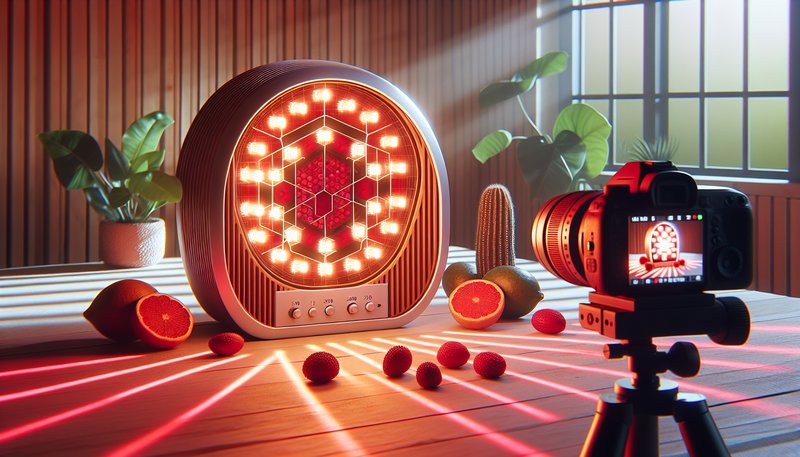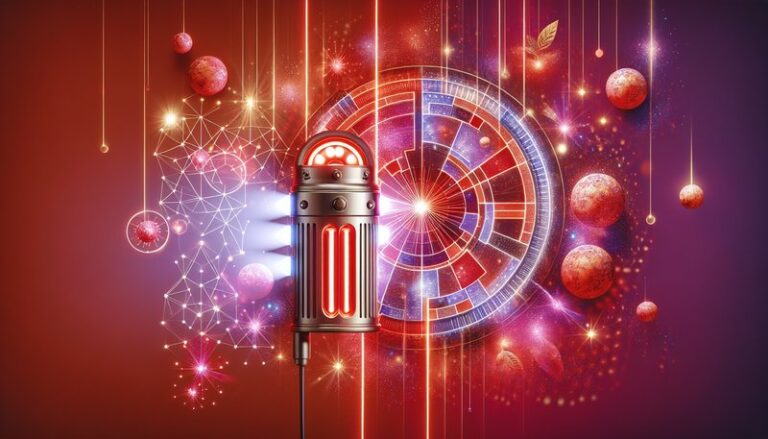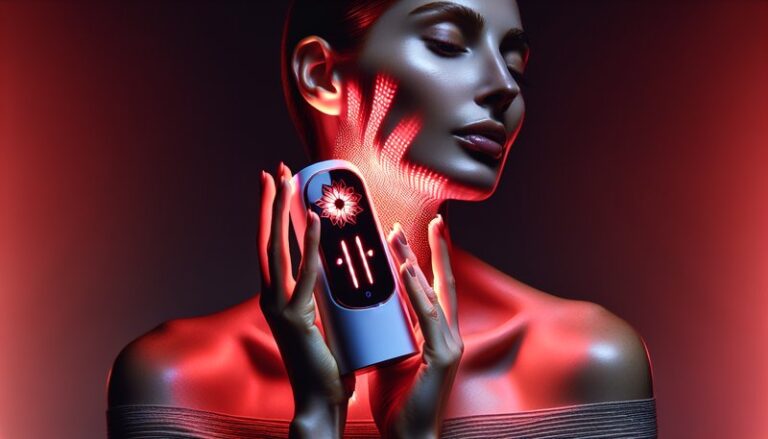Does Red Light Therapy Make Vitamin D?
Could red light therapy be the key to synthesizing vitamin D?
This article explores the relationship between red light therapy and vitamin D production in the body. While both have health benefits, it’s essential to understand their mechanisms and whether one can supplement the other. We will cover the basic principles of red light therapy, its benefits, and finally answer the pressing question of whether it can help with vitamin D synthesis.
Key Takeaways
- Red light therapy and vitamin D production are not directly linked; each operates through different mechanisms.
- Red light therapy offers various benefits, including skin rejuvenation and pain relief.
- Vitamin D is primarily synthesized through direct sun exposure, not through artificial light therapies.
What is Red Light Therapy?
Red light therapy (RLT) is a treatment that utilizes specific wavelengths of red and near-infrared light to promote healing and rejuvenation in the body. The therapy is often used for skin conditions, muscle recovery, and pain relief. It operates on the principle that certain wavelengths of light can penetrate the skin and stimulate cellular functions.
How Does Red Light Therapy Work?
The primary mechanism behind RLT is the stimulation of mitochondrial activity in cells. Mitochondria, known as the powerhouse of the cell, produce adenosine triphosphate (ATP), the energy currency of the cell. Enhanced ATP production can lead to improved cell function, rejuvenation, and healing.
What are the Benefits of Red Light Therapy?
Red light therapy carries a multitude of advantages, ranging from aesthetic improvements to pain management.
Skin Rejuvenation
RLT promotes collagen synthesis, which can improve skin elasticity and reduce the appearance of fine lines and wrinkles. Studies suggest that users may experience a significant improvement in overall skin texture after regular sessions.
Pain Relief
Numerous studies indicate that RLT can alleviate pain associated with conditions like arthritis, muscle injuries, and chronic pain syndromes. This makes it an appealing alternative or complement to traditional pain management therapies.
Enhanced Muscle Recovery
Athletes and active individuals often utilize RLT to speed up recovery after intense workouts. The therapy reduces inflammation and promotes healing in damaged tissues, allowing for quicker return to physical activity.
Additional Benefits
RLT may also support hair growth in individuals experiencing hair loss and help in managing acne by reducing inflammation and killing bacteria on the skin.
Is it Possible to Produce Vitamin D via Red Light Therapy?
While both red light therapy and vitamin D relate to light exposure, they stimulate different biochemical processes. Vitamin D synthesis specifically requires ultraviolet B (UVB) rays from sunlight, which trigger reactions in the skin to produce vitamin D3.
What are the Advantages of Natural Sun Exposure for Vitamin D?
Natural sunlight is the most effective source of vitamin D due to the presence of UVB rays. Sun exposure:
- Supports Immune Function: Adequate vitamin D plays a crucial role in maintaining a healthy immune system.
- Improves Mood: Sunlight can enhance mood through the release of endorphins and serotonin, which help alleviate feelings of depression.
- Bones and Muscle Health: Vitamin D is vital for calcium absorption, contributing to stronger bones and muscle functionality.
What are Common Misconceptions about Red Light Therapy and Vitamin D?
Many people think that since red light can be therapeutic, it might also synthesize vitamin D. This is a misconception; only UVB light can do that.
What are the Things to Consider Before Using Red Light Therapy?
Before starting red light therapy, there are several factors to consider for safe and effective use.
Skin Type
Individuals with different skin types may respond differently to RLT. It’s important to understand your skin type to determine the suitability and duration of treatment.
Underlying Health Conditions
Before beginning therapy, it’s advisable to consult a healthcare provider, especially for individuals with conditions like photosensitivity or certain skin diseases.
Discover Are Red Light Beds Safe?
Treatment Duration and Frequency
Guidelines for treatment duration and frequency vary by individual needs and the specific device used. Beginners should start with shorter sessions to assess tolerance.
Device Quality
Ensure the red light therapy device is of good quality, as lower-quality devices may not deliver the desired wavelengths effectively.
What are the Alternatives to Red Light Therapy for Health Benefits?
If red light therapy doesn’t appeal to you, there are several alternatives for health improvements.
Read all about it Does Red Light Therapy Kill Bacteria?
UVB Lamps
These specialized lamps emit UVB rays specifically designed to aid in vitamin D synthesis, especially in areas with limited sunlight exposure.
Phototherapy
Phototherapy is another light-based treatment, commonly used for skin conditions such as psoriasis and eczema. This therapy usually involves a combination of UV light types.
Vitamin D Supplements
Oral supplements can help individuals who struggle to obtain adequate sunlight exposure and thus support overall health.
Exercise and Nutrition
Regular exercise, combined with a diet rich in vitamin D sources (like fatty fish, fortified dairy, and egg yolks), can help maintain healthy vitamin D levels without the need for light therapy.
Conclusion: Is it Recommended to Rely on Red Light Therapy for Vitamin D?
While red light therapy is beneficial for numerous health applications, it does not contribute to vitamin D production. Natural sunlight remains the best source for vitamin D synthesis, and individuals should explore other options if sunlight exposure is limited. Red light therapy can be a valuable tool for enhancing skin health, reducing pain, and aiding recovery, yet it should not be seen as a substitute for natural vitamin D sources.
Frequently Asked Questions
Can I synthesize vitamin D using any type of artificial light?
No, vitamin D synthesis specifically requires UVB rays, which are not emitted by most artificial light sources.
How often should I undergo red light therapy?
Treatment frequency depends on your specific goals and the device used, but consultations with professionals can establish a suitable regimen.
Is red light therapy safe for everyone?
For most people, red light therapy is considered safe, but those with specific health conditions or skin sensitivities should consult a doctor beforehand.
Are there any side effects of using red light therapy?
Generally, side effects are minimal, but some individuals may experience mild irritation or discomfort, especially during initial treatments.
How does sunlight compare to red light therapy in health benefits?
Sunlight provides a broader range of health benefits, including vitamin D production and psychological boosts, while red light therapy is more focused on localized physical therapy and skin health.




